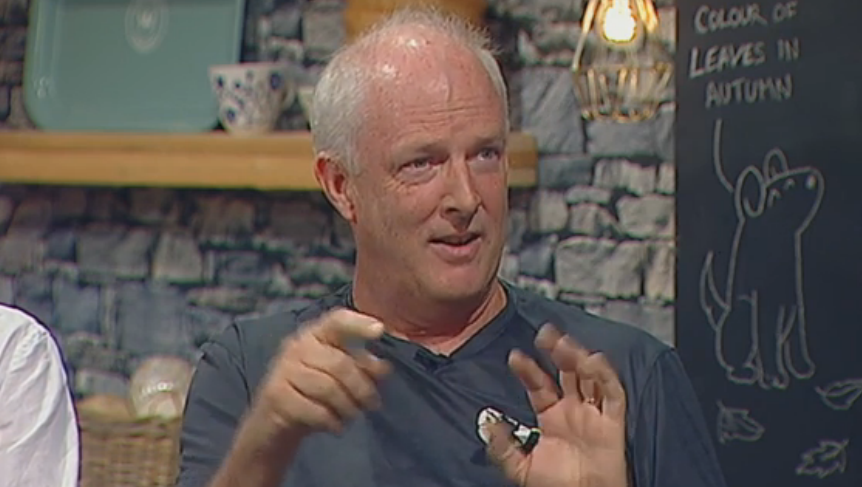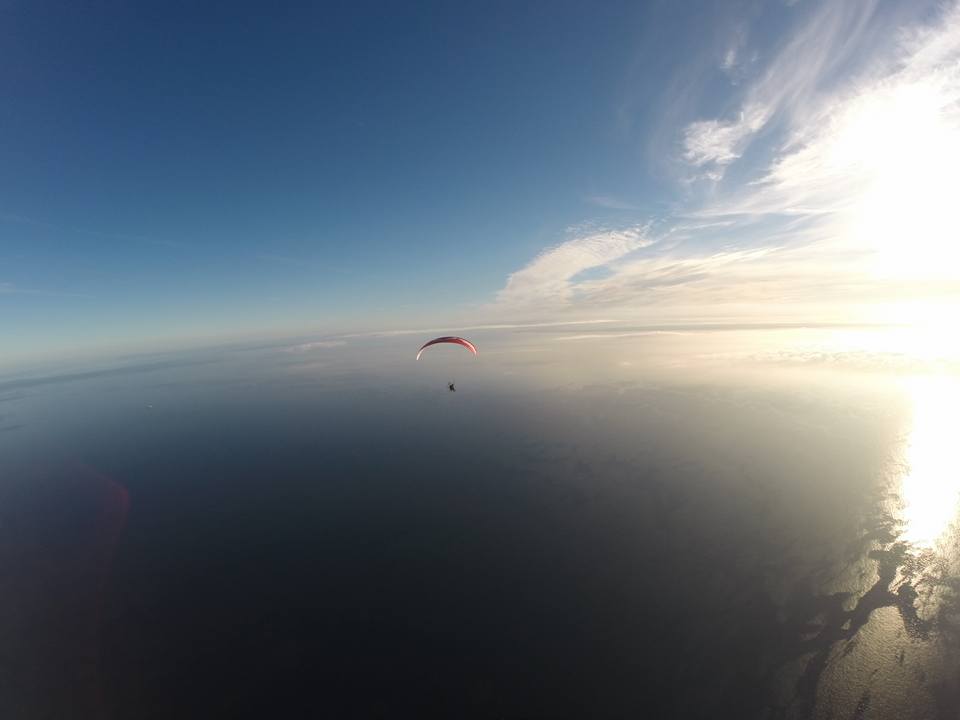|
Guest on the TV3 Seven O'Clock show, with Thomas Barr (Olympic Hurdler) and Senator David Norris.
1 Comment
After two and a half weeks of flying and almost a week at the Southern tip of Spain awaiting final approval to fly across to Africa, the final leg of the journey took place on Friday Morning 16th September. After some time trying to get the required formal approval to fly to Tangiers it was decided that rather than wait another week, I should make the flight to the less complicated crossing from Tarifa to Ceuta, on the tip of the Moroccan coastline. Ceuta while in Africa, is (like UK Gibraltar) a Spanish city.
A practical solution to a complicated little crossing! In hind sight when i saw about 5 or 6 fancy choppers on the small helipad, I am glad we didn't agree to landing there!!
We finally made it yesterday 11th September to the South tip of Spain! It was a tough last few days with challenging warm weather conditions that meant flying was restricted to the first 4hrs of the morning and grounded after that for the rest of the day in temperatures up to 40 degress. We are now pitched in a campsite on the very pretty Tarifa beach, waiting for the Weather and the paperwork to allow us to make the final short leg of the journey. We are surrounded by wildly spinning wind farms on one side and beach activities making use of the strong winds on the other! The distance across to Africa is tantalisingly close, but yet the conditions here are proving challenging with high winds since we arrived. Visibility has been mixed, with views coming and going, but this crossing is a good bit shorter than the last two. Tarifa beach, famous for its windsurfing and kite surfing, and its windy conditions!!
We plan to fly across to the African side, in Tangiers, Morocco, and meet some of our new friends there before coming back home on the ferry to Tarifa. There is a direct ferry route from Tarifa to Tangiers, with two ferries running almost hourly. Our weather challenges are not the only problem. We arrived here about a week ahead of schedule, and this has meant that we are here in the middle of the festival of Eid, which lasts at least three or four days!! Everything on the other side is closed and no officials available to sign off our permissions. The Lisbon based Embassy staff have been very helpful, but i think we need to be patient and wait for all to fall into place. I am very anxious not to jeopardise the hard work a small number of Paramotor pilots in Morocco have done to legalise the sport there after some years of the sport not being permitted. This incidentally was because of a few European pilots misbehaving and upsetting the aviation Authorities. Everything will come together Inshallah! I have been very bad at updating progress reports on the website. Facebook is a little more current I am afraid! We have reached a point where we are about 150km below Madrid and only a few days from the Southern tip of Spain and facing the last great challenge of the trip! We hope to cross to North Africa on Monday or Tuesday, weather permitting. Progress was held up for a few days with ground crew swap and a little recovery time in Madrid, as well as head winds all morning today. Much of this afternoon was spent sorting out legalities for the crossing to Morocco. Pilots in Morocco have jumped in to help try to get the legals over the line. Fingers crossed. All looking good at the moment.
Will try to update more! After 750km of tough and mixed weather conditions, we have reached our next major hurdle! Dover. Looking out over a big piece of water again. We are now good to go for the English Channel. Flight plan logged. Customs cleared. French airfield given advance warning.
Weather looking good for morning. We have had everything thrown at us with weather and flown in conditions I have not flown in before! I have a combination of wing and motor now that make easy and safe going of these challenging conditions. With a slight tailwind (max 10-12mph) I was able to maintain 60-75kph over ground for a lot of today, hovering about cloud base at about 1500-2000ft. Good flying conditions at reasonable height. We had a very good first day of flying. We managed to cover about 300km which included the first significant sea crossing from Northern Ireland to Scotland. The first leg was flown with Fergus Taylor, who joined me for this crossing, to see me on the way. John Drew followed on the ferry from NI across and was about 4hrs behind me for the start of the day. The crossing was flown in perfect conditions, which not only made the flying a pleasure, but also made the boat crossing perfect. Philip and Stephan Scallan, were accompanied by Sinead Creagh and David Burns. Huge thanks to Philip for bringing the boat up by road from Wexford. She was able to keep up with us flying about 50-55kph all the way. Thanks to Fergus for the lovely crossing photos. The first landing in Scotland was alongside a petrol station in Creetown, where I re-fueled and had a cup of tea, before heading on my way. The next flight took me from Scotland to a spot in Northern England, above the Lake District. I stayed here waiting for John and the campervan to catch up, and where we had a lunch stop, before we heading on across the Pennines for the next leg. This flight was interesting! Low cloud and increasing winds through the mountain pass kept me alert, as we moved East and away from the last significant mountains ahead all the way down the East Coast. I took off in 20+ degrees but by the time I got up the Pennines, it was Cold!! After another hour in the air I was very cold and eventually had to land as soon as I found a flag giving me some ground wind information. At one point in the pass, the ground speed was up to 75-80kph, which was expected as the wind funnelled though the gap. It would have been better to have been higher at this point, but cloud base was less than 1000' above the road at the mountain top. Wind moderated and settled some 10k down the road. Unfortunately after a good start we are stuck in Bernard Castle now waiting for the rain to stop!
Finally we are hoping we have the weather break we were hoping for. We may be lucky enough to get the Northern Irish Sea crossing made either this Tuesday evening if rain lets up, or Wednesday morning.
The crossing is the first challenge on this trip, and to ensure a safe crossing we need suitable conditions for flying and for the boat, who will accompany the crossing. If conditions are too rough on water, the boat will have more difficult keeping up! We would hope that this flight will only take 40-45mins over exposed water before reaching the safety of the Scottish side. Updates will be posted. Sea survival training and testing session with Ray Johnston, Operations Manager and his team, at the NMCI Pool training facility.An afternoon at the National Maritime College training facility, proved hugely valuable to the planning for the open water crossings. In the event of an engine failure over the sea, the paramotor would glide in a fully controlled manner for up to 15minutes, depending on the height, and would have a glide ratio of up to 5km in the direction of the rescue/ support boat, arranged for the crossings. In the NMCI facility, we tested on land and in the water, evacuation/ exit strategy from the equipment, and various configurations of equipment floatation, and personal floatation devices. On land the NMCI did a classroom session to look at the shock effect of landing in cold water and the potential risk of gasping for air, with inevitable potentially serious implications. Equipment for the flight and water crossings was reviewed in detail. As one option for exiting the equipment just before making contact was reviewed, a series of jumps off the higher platforms in the NMCI were tried, to perfect the protection of the airways and dropping from a height. The NMCI provide training for Seamen of all levels and also for commercial pilots, in both Helicopter and fixed wing test rigs. They have almost every type of life raft available, including aircraft types, for sea survival training. There are RIB and inflatable boats in the facility to practice recovery and rescue training. The NMAI and the IAA are now exploring the possibility of bringing specifically tailored GA pilot training to the facility for those wishing to avail of this crucial training. Recent incidents this summer have highlighted the need for some preventative survival training. The results of the session will be reviewed in the coming weeks and outcomes shared. Sacha Dench, UK paramotor pilot has also conducted tests in the RNLI similar training facility and we are planning to share notes and try to make the findings available to all. Huge thanks to Ray and the NMAI team for this opportunity. RTE footage to follow shortly!
The NMCI facility was able to recreate storm conditions with wind waves and rain, to allow trainees to see how different it all is in open choppy weather conditions at sea,
National Maritime College of Ireland: http://www.nmci.ie/ NMCI Services, National Maritime College of Ireland, Ringaskiddy, Co. Cork, Ireland Telephone: 021-4335609 Fax: 021-4335696 E-mail: [email protected] |
AuthorOisin Creagh - Pilot Archives
October 2016
Categories |
| GORTA Africa Self Help |
News |



























 RSS Feed
RSS Feed